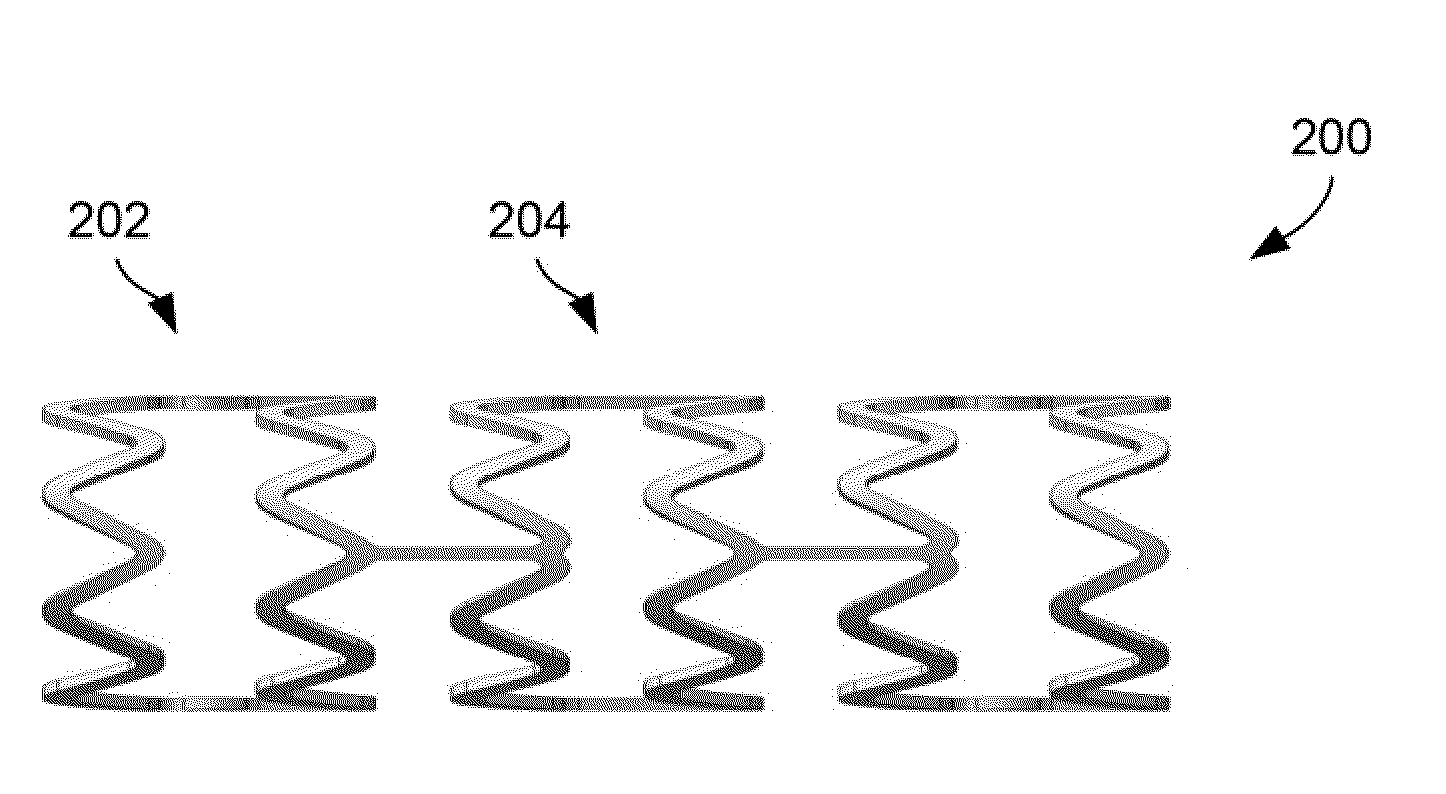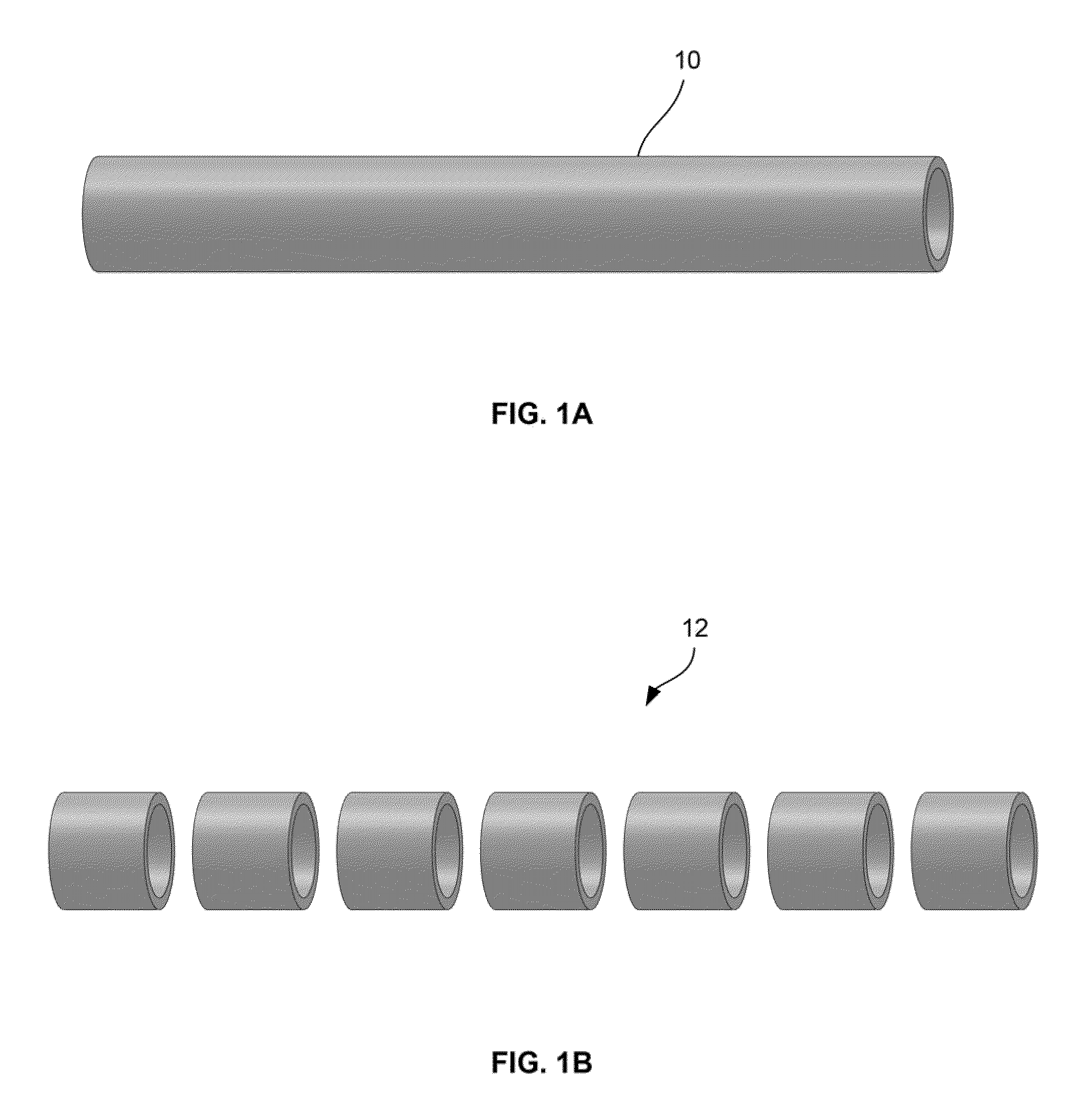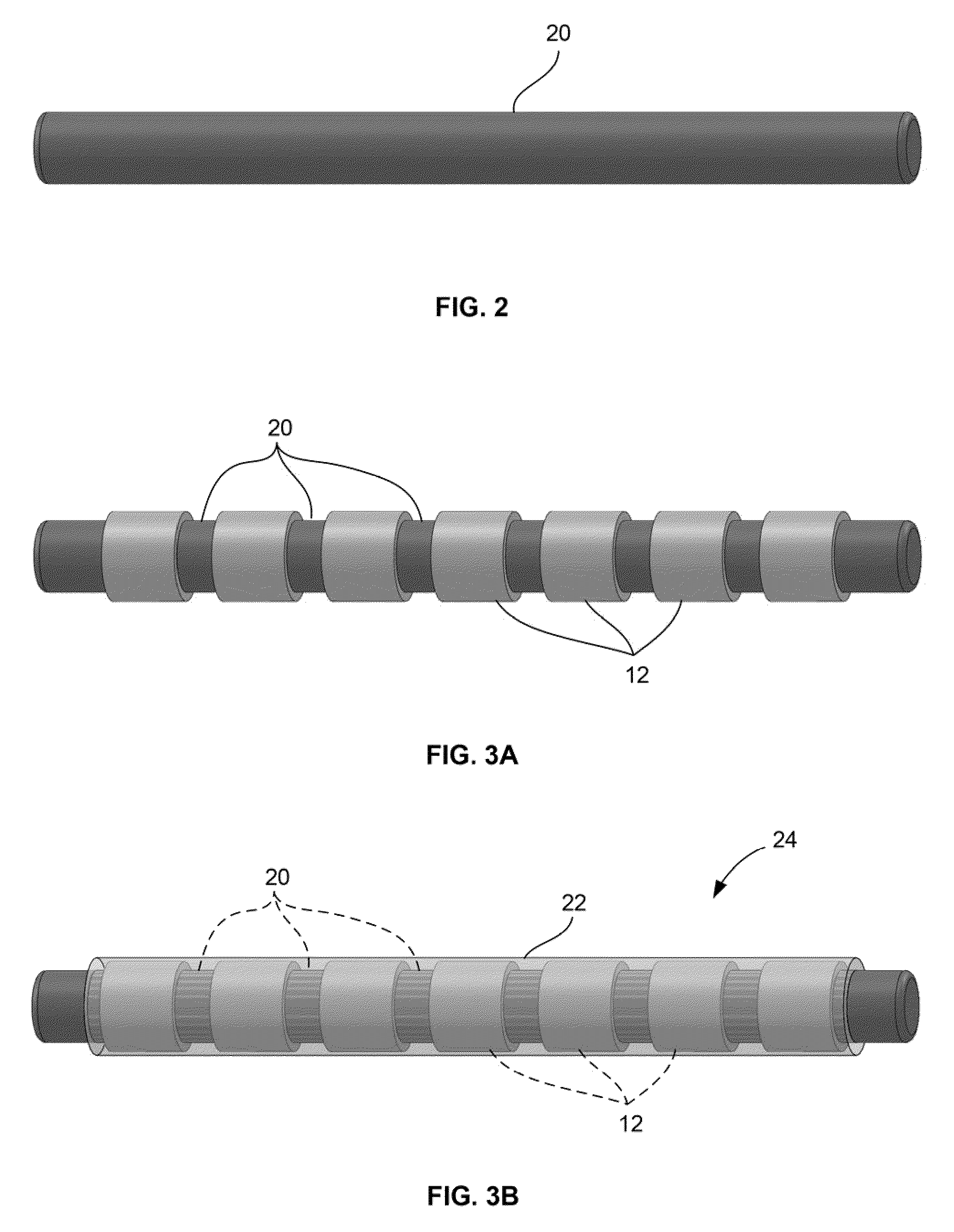Composite stent having multi-axial flexibility
a flexible, composite technology, applied in the field of composite prostheses, can solve the problems of increased wall thickness, fracturing of metal-fabricated medical devices, and increased wall thickness of certain other implantable devices made from polymers, and achieve the effect of high radial strength
- Summary
- Abstract
- Description
- Claims
- Application Information
AI Technical Summary
Benefits of technology
Problems solved by technology
Method used
Image
Examples
Embodiment Construction
[0040]When a stent is placed into a vessel (particularly vessels such as the superficial femoral artery (SFA), iliac, popliteal, subclavian, pulmonary, renal, coronary arteries, etc.), the stent's ability to bend and compress is reduced. Moreover, such vessels typically undergo a great range of motion requiring stents implanted within these vessels to have an axial flexibility which allows for its compliance with the arterial movement without impeding or altering the physiological axial compression and bending normally found with positional changes.
[0041]A composite stent structure having one or more layers of bioabsorbable polymers may be fabricated with the desired characteristics for implantation within these vessels. Each layer may have a characteristic that individually provides a certain aspect of mechanical behavior to the stent such that the aggregate layers form a composite polymeric stent structure capable of withstanding complex, multi-axial loading conditions imparted by...
PUM
| Property | Measurement | Unit |
|---|---|---|
| width | aaaaa | aaaaa |
| distance | aaaaa | aaaaa |
| diameter | aaaaa | aaaaa |
Abstract
Description
Claims
Application Information
 Login to View More
Login to View More - R&D
- Intellectual Property
- Life Sciences
- Materials
- Tech Scout
- Unparalleled Data Quality
- Higher Quality Content
- 60% Fewer Hallucinations
Browse by: Latest US Patents, China's latest patents, Technical Efficacy Thesaurus, Application Domain, Technology Topic, Popular Technical Reports.
© 2025 PatSnap. All rights reserved.Legal|Privacy policy|Modern Slavery Act Transparency Statement|Sitemap|About US| Contact US: help@patsnap.com



